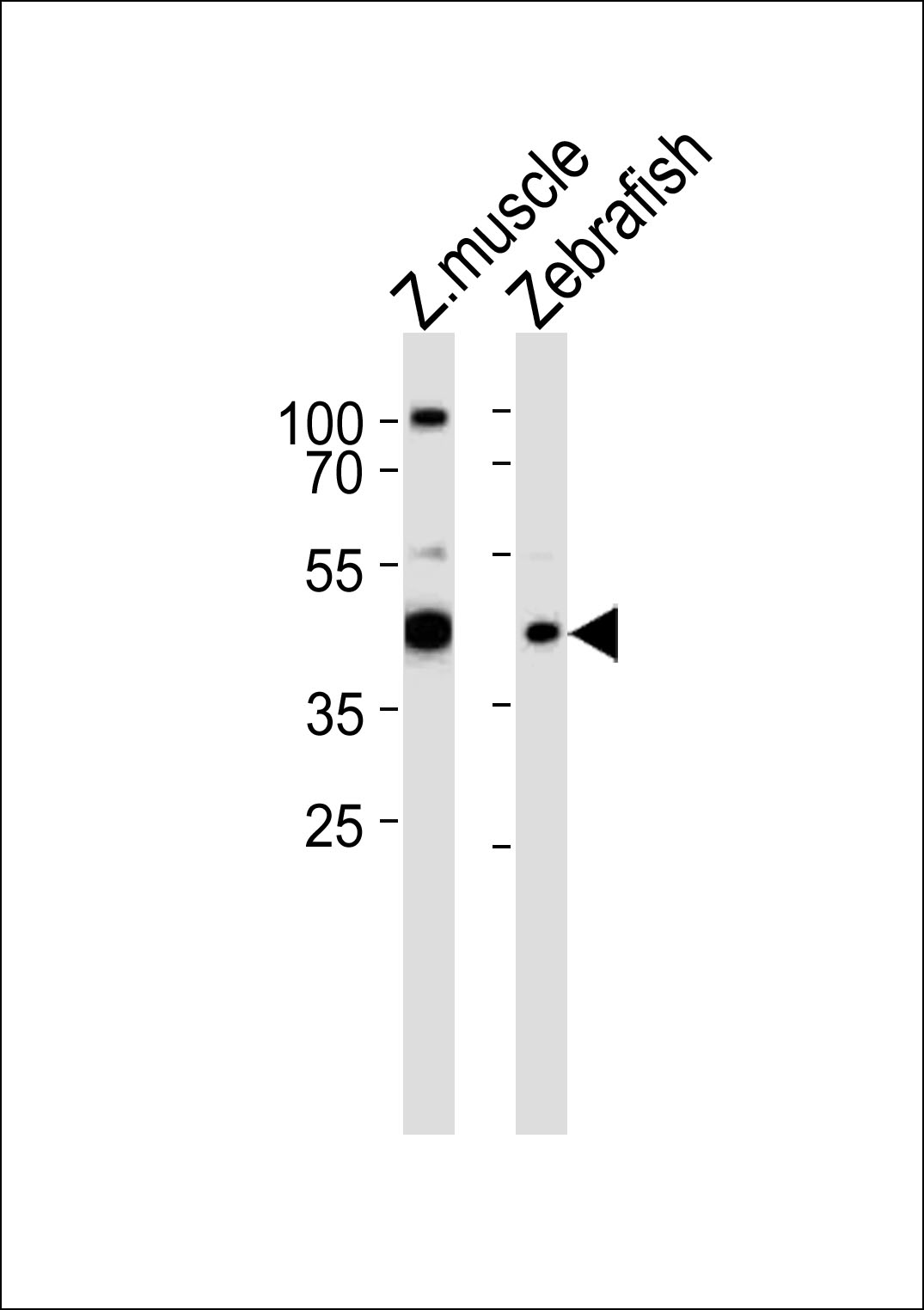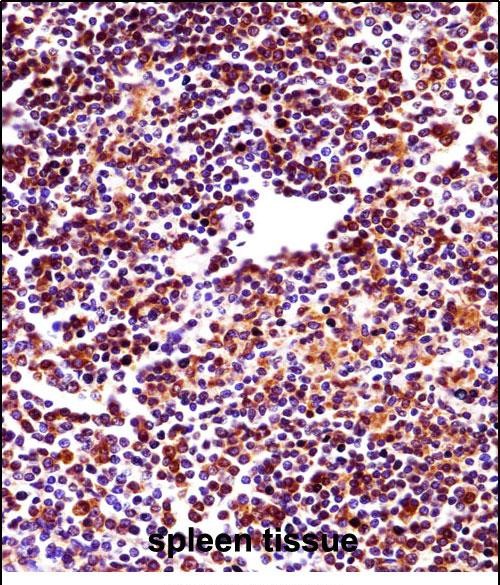RBM22 Antibody (Center)
Affinity Purified Rabbit Polyclonal Antibody (Pab)
- SPECIFICATION
- CITATIONS
- PROTOCOLS
- BACKGROUND

Application
| WB, IHC-P, E |
|---|---|
| Primary Accession | Q9NW64 |
| Other Accession | Q7ZXB5, Q4V7D7, Q8BHS3, Q4R4J1, Q6NZZ9, Q5ZM16, Q3B7L8, NP_060517.1 |
| Reactivity | Human |
| Predicted | Bovine, Chicken, Zebrafish, Monkey, Mouse, Rat, Xenopus |
| Host | Rabbit |
| Clonality | Polyclonal |
| Isotype | Rabbit IgG |
| Calculated MW | 46896 Da |
| Antigen Region | 165-193 aa |
| Gene ID | 55696 |
|---|---|
| Other Names | Pre-mRNA-splicing factor RBM22, RNA-binding motif protein 22, Zinc finger CCCH domain-containing protein 16, RBM22, ZC3H16 |
| Target/Specificity | This RBM22 antibody is generated from rabbits immunized with a KLH conjugated synthetic peptide between 165-193 amino acids from the Central region of human RBM22. |
| Dilution | WB~~1:1000 IHC-P~~1:10~50 E~~Use at an assay dependent concentration. |
| Format | Purified polyclonal antibody supplied in PBS with 0.09% (W/V) sodium azide. This antibody is purified through a protein A column, followed by peptide affinity purification. |
| Storage | Maintain refrigerated at 2-8°C for up to 2 weeks. For long term storage store at -20°C in small aliquots to prevent freeze-thaw cycles. |
| Precautions | RBM22 Antibody (Center) is for research use only and not for use in diagnostic or therapeutic procedures. |
| Name | RBM22 |
|---|---|
| Synonyms | ZC3H16 |
| Function | Required for pre-mRNA splicing as component of the activated spliceosome (PubMed:28076346, PubMed:28502770, PubMed:29301961, PubMed:29360106, PubMed:29361316, PubMed:30705154). Involved in the first step of pre-mRNA splicing. Binds directly to the internal stem- loop (ISL) domain of the U6 snRNA and to the pre-mRNA intron near the 5' splice site during the activation and catalytic phases of the spliceosome cycle. Involved in both translocations of the nuclear SLU7 to the cytoplasm and the cytosolic calcium-binding protein PDCD6 to the nucleus upon cellular stress responses. |
| Cellular Location | Nucleus. Cytoplasm Note=Nearly exclusively nuclear. Translocated from the nucleus to the cytoplasm after heat shock cell treatment. May be shuttling between the nucleus and the cytosol. |

Thousands of laboratories across the world have published research that depended on the performance of antibodies from Abcepta to advance their research. Check out links to articles that cite our products in major peer-reviewed journals, organized by research category.
info@abcepta.com, and receive a free "I Love Antibodies" mug.
Provided below are standard protocols that you may find useful for product applications.
Background
This gene encodes an RNA binding protein. The encoded protein may play a role in cell division and may be involved in pre-mRNA splicing. Related pseudogenes exist on chromosomes 6, 7, 9, 13, 16, 18, and X.
References
Krebs, J. Biochim. Biophys. Acta 1793(6):979-984(2009)
Satoh, J., et al. Neuropathol. Appl. Neurobiol. 35(1):16-35(2009)
He, F., et al. Genet. Mol. Res. 8(4):1466-1473(2009)
Montaville, P., et al. Biochim. Biophys. Acta 1763(11):1335-1343(2006)
Kittler, R., et al. Nature 432(7020):1036-1040(2004)
If you have used an Abcepta product and would like to share how it has performed, please click on the "Submit Review" button and provide the requested information. Our staff will examine and post your review and contact you if needed.
If you have any additional inquiries please email technical services at tech@abcepta.com.














 Foundational characteristics of cancer include proliferation, angiogenesis, migration, evasion of apoptosis, and cellular immortality. Find key markers for these cellular processes and antibodies to detect them.
Foundational characteristics of cancer include proliferation, angiogenesis, migration, evasion of apoptosis, and cellular immortality. Find key markers for these cellular processes and antibodies to detect them. The SUMOplot™ Analysis Program predicts and scores sumoylation sites in your protein. SUMOylation is a post-translational modification involved in various cellular processes, such as nuclear-cytosolic transport, transcriptional regulation, apoptosis, protein stability, response to stress, and progression through the cell cycle.
The SUMOplot™ Analysis Program predicts and scores sumoylation sites in your protein. SUMOylation is a post-translational modification involved in various cellular processes, such as nuclear-cytosolic transport, transcriptional regulation, apoptosis, protein stability, response to stress, and progression through the cell cycle. The Autophagy Receptor Motif Plotter predicts and scores autophagy receptor binding sites in your protein. Identifying proteins connected to this pathway is critical to understanding the role of autophagy in physiological as well as pathological processes such as development, differentiation, neurodegenerative diseases, stress, infection, and cancer.
The Autophagy Receptor Motif Plotter predicts and scores autophagy receptor binding sites in your protein. Identifying proteins connected to this pathway is critical to understanding the role of autophagy in physiological as well as pathological processes such as development, differentiation, neurodegenerative diseases, stress, infection, and cancer.





